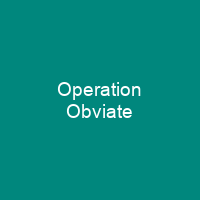Operation Obviate: A Failed Attempt to Sink the German Battleship Tirpitz
Imagine a scenario where a mighty battleship, once feared and revered, lies vulnerable on a Norwegian fjord. This was the case with Tirpitz, the formidable German battleship that posed a significant threat during World War II. Operation Obviate, an Allied air raid in 1944, aimed to finally bring down this behemoth, but it ended in failure. Was it just bad luck, or was there more to the story?
The Threat of Tirpitz
From early 1942, Tirpitz loomed as a looming shadow over Allied convoys through the Norwegian Sea. The Allies needed to keep a powerful force nearby to counter this threat. But how did they plan to take her down? Operation Obviate was just one of several attempts, each more daring than the last.
The Preparations for Operation Obviate
Operation Obviate began with meticulous planning and preparation. The RAF’s Bomber Command selected 36 Lancasters to carry out the mission. These aircraft were specially modified to extend their range, fitted with extra fuel tanks, and crewed but armed with reduced armament due to increased take-off weight.
Why did they choose this particular day? The weather had to be just right for the bombers to accurately target Tirpitz. On October 29, 1944, conditions finally permitted the attack. The aircrew were briefed and prepared for their mission, knowing that success was not guaranteed.
The Execution of Operation Obviate
At 7:49 am GMT, the first bombs were dropped. Sixteen aircraft from No. 617 Squadron released Tallboys aimed at Tirpitz‘s estimated position. Meanwhile, several aircraft from No. 9 Squadron made multiple bomb runs over Tromsø, conducting five approaches before attacking. Despite their efforts, none of the Tallboys struck Tirpitz. The explosions caused damage and injured three crew members, but the primary target remained unscathed.
Why did this operation fail? Was it due to poor weather conditions or was there something else at play?
The Aftermath of Operation Obviate
Despite the failure of Operation Obviate, the Allies remained committed to sinking Tirpitz. Subsequent operations, including Operation Catechism on November 12, 1944, ultimately led to her destruction. The German battleship was finally brought down with significant damage and loss of life.
Was it a matter of perseverance or were there other factors at work? The story of Tirpitz‘s downfall is one of resilience and strategic planning in the face of adversity.

Operation Obviate serves as a reminder of the complexities and challenges faced during World War II. It highlights the determination of the Allies in their quest to neutralize Tirpitz, even when faced with setbacks. The story of this failed operation is a testament to the relentless pursuit of victory, no matter the odds.
You want to know more about Operation Obviate?
This page is based on the article Operation Obviate published in Wikipedia (retrieved on November 28, 2024) and was automatically summarized using artificial intelligence.







